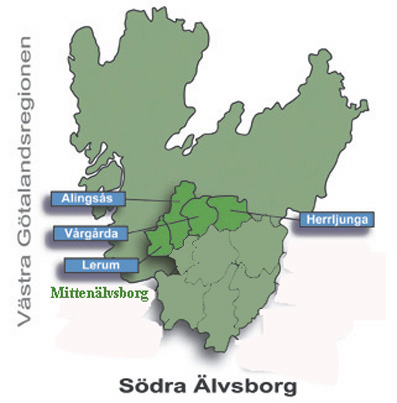The history of health care in Mittenälvsborg – then, now and afterwards
|
||
|
The site presents a history about how “Open Care” grew from the beginning of the 1800s till 2000 in Mittenälvsborg in western Sweden. Mittenälvsborg is a part of the region of Västra Götaland including the rural districts Lerum, Alingsås, Vårgårda och Herrljunga. Västra Götaland was established in 1999 by a union of the county councils of Skaraborg, Älvsborg , Bohuslän and the city of Gothenburg. In the first part we describe earlier historical times from the 17th century to 1969. It gives the background to the future – the time of Primary Health Care – that began in 1969. This is described in part 2, which is the main part. In part 3 we try to discover how the future will turn out.
Here we describe the project and the authors. A summary for extract, pdf-fil |
||
The projectThis is the story of how open care has been developed in Mittenälvsborg, focusing on Lerum. We have wanted to emphasize various aspects. The first historical part up to 1969 gives a background to the the future primary care that started in 1970. We call it “the time of district medical doctors'”(“provinsialläkartiden”).Then, we want to focus on how the primary care built up from 1970s to the 1980s including the growth of the so called “Lerum model”. The project's implementationThe project's first part – the time of district medical doctors (Provinsialläkartiden) – was a collaboration between Jan Kuuse and Bengt Dahlin with the aid of archivists, library personnel and managers of museums – all of whom showed a most helpful attitude to our project. Ella Carlsson, Stenkullen helped us in the interviews. |
||
The region West Götaland |
||
| West Götaland (Västra Götalandsregionen) is a political and democratically governed organization. The Region has 149 delegates. who are responsible for the care, interests and needs of the inhabitants. A regional board prepares the proposals for decisions by delegates. The regional board has 17 members – full-time politicians. The board also has to ensure that the decisions are implemented. The West Götalands region has 1.5 million inhabitants, is 300 km long and 250 km broad. It is Scandinavia's biggest transport region and port – a node for roads and railways with four airports. The region has a strong position within vehicle industry, also in chemistry, medicines, foodstuffs, electronics, tourism, culture and the communication media. Within the region there are two universities, a technical college and four other colleges with 75 000 students. |
||
 |
||
The authors |
||
Jan Kuuse |
||
|
Associate professor in economic history at the University of Gothenburg since 1971. He has specially investigated different aspects of the modernization of Swedish society and published books on following subjects: |
||
Bengt Dahlin |
||
| Fully qualified doctor (Examination in Gothenburg and certified 1957), General Practitioner (Specialist in general Practice, Allmänmedicin), District medical officer (past) in Korpilombolo 1959 - 1962 and in Gråbo and Lerum 1962 - 1995. Chief Physician Primary Health Care in different periods and levels. Doctor honoris causa 2000 (The university of Gothenburg). The University Orator made this short presentation, marking the achievements of the honorand: "He has been clinically active from Korpilombolo to Gråbo and Lerum and he has worked admirably and assiduously to make general practice a valid academic subject. He was involved in the early thesis in general medicine (allmänmedicin). Early he took the initiative in training doctors. That made general medicine into a pioneer in the education of doctors and in the guidance of them in their studies. It also made general medicine to a pioneer in the education of specialists in medicine. Furthermore, he was one of the initiators and builders of research and development (R&D) in primary health care. He has personally and actively developed medical informatics as an aid to the classification of diagnosis, and of information processing, specially for health care records. Above all, the Faculty of Medicine will thank him for a considerable work on the improvement of quality in undergraduate studies in medicine. He was organizer and promotor in development of a new Consultation curriculum at the faculty. It became the start of a dynamic restructuring of undergraduate education of physicians in Gothenburg. All his publications are in Swedish. Please refer to the Swedish language version. |
||
Back to page of introduction |
||